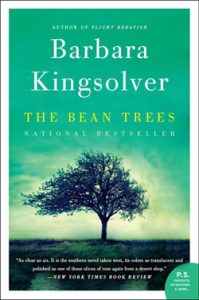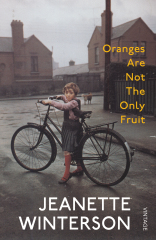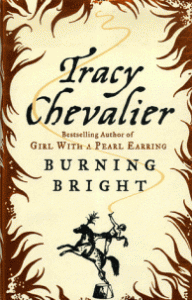The summer holidays is the time when I relish the opportunity of reading guiltlessly (i.e. I don’t have to trade a good novel for a pile of unmarked papers or choose to ignore the papers and feel guilty about it!), so while everybody else was making sandcastles, I buried myself in Barbara Kingsolver‘s The Bean Trees.
This short novel is pure poetry. I read (somewhere in the New York Times) it was her first novel and she felt she had split herself up into many parts to create her characters to the point when she thought she could never write another novel. Fortunately, time has proved her wrong!
Truly enough, all the characters seem ever so perfect even though genuinely diff erent in their perfection. Their lives are not easy -event threatened at times as when Estevan and his wife run away from dictatorial Nicaragua or when Taylor realises Turtle ( a three-year-old) was abused- but they are so resilient it seems some magic is operating all around them. This magic is probably Barbara Kingsolver’s incredible writing skills. It’s sheer ‘realistic poetry’. It’s so beautifully written, so vivid in colours, made so real thanks to the subtle presence of nature (not the so-called sublime descriptions that you end up skipping in some novels), that the story delicately echoes the modesty of those who suffered a terrible ordeal and simply, humbly recovered.
erent in their perfection. Their lives are not easy -event threatened at times as when Estevan and his wife run away from dictatorial Nicaragua or when Taylor realises Turtle ( a three-year-old) was abused- but they are so resilient it seems some magic is operating all around them. This magic is probably Barbara Kingsolver’s incredible writing skills. It’s sheer ‘realistic poetry’. It’s so beautifully written, so vivid in colours, made so real thanks to the subtle presence of nature (not the so-called sublime descriptions that you end up skipping in some novels), that the story delicately echoes the modesty of those who suffered a terrible ordeal and simply, humbly recovered.
Taylor, the main character and narrator, is young and poor, and starts the story, like some sort of American rite of passage, on the road. She rather quickly (after just 17 pages) ends up in charge of a small child, who is the guideline and cement of the whole novel. Yet, this story is not a Bildungsroman, it is likely to appeal to all generations.
 is Jeanette Winterson’s masterly use of tone and language. The story is written from the point of view of the girl, who is extremely respectful of the mum’s choices and decisions as well as clearly questioning the way they live. Jeanette is torn apart and the reader can feel it too without becoming judgemental.
is Jeanette Winterson’s masterly use of tone and language. The story is written from the point of view of the girl, who is extremely respectful of the mum’s choices and decisions as well as clearly questioning the way they live. Jeanette is torn apart and the reader can feel it too without becoming judgemental.